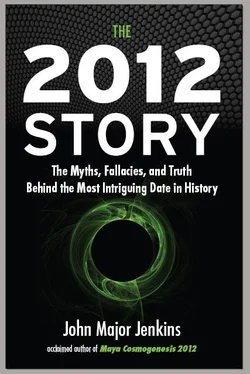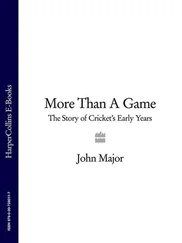Senior day-sign (senior year bearer).Of the four year bearers, the most senior one initiates the 52-haab Calendar Round. The most revered day-sign; can vary from group to group.
Seven Liberal Arts.A seven-tiered system of initiation and education that took form in the Middle Ages and has led to the modern collegiate system of grades and degrees. It was originally based on the Neoplatonic conception of seven planetary spheres of increasing or decreasing proximity to the divine empyrean.
Seven Macaw.A bird deity in The Popol Vuh that exemplifies the motivations and goals of self-serving egoism, thus embodying that archetype.
Sidereal year.The time taken by the earth to orbit the sun once with respect to the fixed stars. Hence it is also the time the sun takes to return to the same position with respect to the fixed stars after traveling once around the ecliptic (as viewed from earth).
Sinusoidal orbit of our solar system around the Galactic Center, above and below the galactic plane.A full orbital circuit in this process is completed in roughly 250 million years. Because our solar system occasionally physically passes through the galactic midplane, this sinusoidal orbital motion is often confused with the galactic alignment, which is the apparent shifting of the sun (on the equinoxes or solstice) around the ecliptic, caused by the precession of the equinoxes, completing a full cycle every 26,000 years.
Stela, stelae.Carved standing monuments often found at archaeological sites. Many contain tzolkin/haab and Long Count dates, or iconographic depictions.
Syncretism.The process by which the Maya assimilated to Christian and European values. The process occurred largely in terms of surface details and formal behavior, while essential spiritual beliefs of the Maya were retained.
13-Baktun cycle.A period of time in the Maya Long Count. It equals 1,872,000 days, or approximately 5125.36 years. It is an expression of a doctrine of World Ages and occurs in association with Creation Texts. The current 13-Baktun cycle began on August 11, 3114 BC, and ends on December 21, 2012.
Toponym.A name or glyph used to designate a place or location—for example, a Maya city.
Traditionalist philosopher.A philosopher who subscribes to the perspective of the Perennial Philosophy (see entry), which is also called Traditionalism.
Tropical year.365.2422 days.
Tzolkin.The sacred count of days (260-day cycle). Derived from the Quiché Maya term chol’qij (count of days).
Tzolkin/Haab, Tzolkin/Haab framework.Conventional combining of tzolkin and haab calendars to designate a unique calendrical position within the 52-haab Calendar Round period. For example, 4 Ahau 3 Kankin is a tzolkin/haab date, which occurs only once every Calendar Round.
Vague solar year.365 days, otherwise known as the haab.
Venus calendar.The system by which morning star appearances of Venus are predicted. Consists of the nestled cycles of tzolkin, haab, and Venus.
Venus cycle.The synodical period of Venus. Equals 583.92 days; the Maya used a 584-day approximation.
Venus emergence as morning star. The first day on which Venus becomes visible in the eastern morning sky after inferior conjunction (passing in front of the sun). Reckoned to occur four days after perfect inferior conjunction.
Venus Round.The period of 104 haab that synchronizes the primary cycles of the Maya Calendar Round (the tzolkin and haab) with Venus. Provides a framework by which the astronomical phenomena associated with Venus can be predicted.
Waxaklahun Ub’ah K’awil.The Copan king who ruled between 695 AD and 738 AD. He erected the famous stelae in the Grand Plaza. Commonly used English translation of his name is 18 Rabbit.
World Age doctrine.The belief that humanity passes through distinct chapters or phases of evolution and/or devolution. Many cultures subscribed to a World Age doctrine, which is closely connected to concepts of cyclic time.
Xbalanque.One of the Hero Twins from The Popol Vuh . Refers to the day-sign Ix and the full moon.
Xibalba.The Maya underworld. The portal or road to Xibalba is called the xibalbe or xibalba be in The Popol Vuh, and it corresponds to the dark rift in the Milky Way.
Year bearers.The sequence of four day-signs on which the first day of the haab can occur. There are four because of the relationship between the 20 day-signs of the tzolkin and the 365 days of the haab. 20 divides into 365 evenly with five days left over; thus, every year the year bearer advances by five.
Zero counting.Used by various groups to count the twenty days in the haab months from 0 to 19. The Ixil and Quiché Maya dropped zero counting at some point and began counting the haab days with 1.
Zero date, base date.Pertaining to the Long Count, corresponding to 0.0.0.0.0. The term “base date” is also used for other types of calculation bases found in Maya inscriptions.
*Definitions and discussions marked with an asterisk were adapted from their respective Wikipedia entries.
APPENDIX TWO
TIMELINE OF THE 2012 STORY
August 11, 3114 BC. 13.0.0.0.0. Beginning date of the current 13-Baktun cycle of the Long Count. It is a mathematical back-calculation generated when the Long Count system was inaugurated sometime between 355 BC and the first century BC.
355 BC. Long Count inauguration date suggested by Munro Edmonson; a hypothetical calendar reconstruction.
400 BC-1 BC.Izapa is thriving and its stone carvings are made, depicting early episodes of the Hero Twin Myth.
36 BC.Earliest dated monument in the Long Count, from Chiapa de Corzo.
31 BC.Long Count monument from Tres Zapotes.
19 BC.Latest possible date for a fragmented Long Count monument from Tak’alik Ab’aj, a “sister city” to Izapa. It may date to 39 BC, making it the oldest known dated Long Count monument.
37 AD.Long Count date from El Baúl.
41 AD.Ending of Baktun 8.
83 AD and 103 AD.Early Long Count dates on Stela 5 from Tak’alik Ab’aj.
197 AD.Linda Schele’s dating of the Hauberg Stela.
292 AD.Dated monument from Tikal with full Calendar Round and Long Count information. It defined, for a previous generation of scholars, the beginning of the Classic Period (300 AD to 900 AD). Today the origins of Maya civilizations have been pushed back by new archaeological findings.
435 AD.Ending of Baktun 9.
620 AD-820 AD.Many Long Count dates at Classic Maya sites. Distance Numbers are used and Era beginning and end dates are found at sites such as Quiriguá, Coba, Palenque, Copán, and Tortuguero.
612 AD.Balam Ajaw, king of Tortuguero, was born.
652, October.13-Baktun Creation Date (3114 BC), first mentioned at Copán.
669, January.13-Baktun end date (2012 AD) recorded at Tortuguero.
711 AD, December 3.(9.14.0.0.0). Astronomically significant Long Count date found at many sites, including Piedras Negras, Calakmul, Tortuguero, Palenque, Tikal, and Copán.
738, May 1.Copán king 18 Rabbit is ritually decapitated. It happened at the “Black Hole.”
Читать дальше












